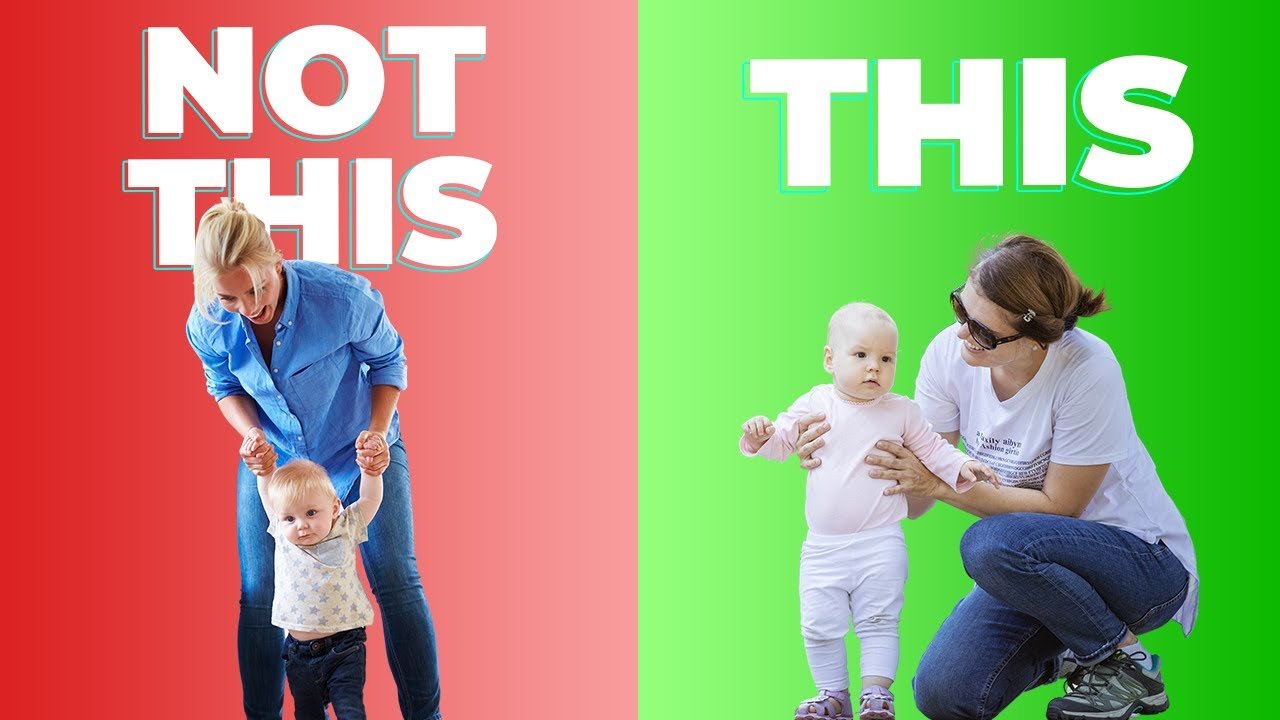When it comes to teaching your baby how to walk, there are more effective methods than simply holding their hands. Activities such as playing in standing, cruising along furniture, and using a baby push walker can provide better support for your little one as they learn this important skill. Holding your baby by their rib cage can also offer better stability and balance while they navigate their first steps.
By opting for alternative activities and methods of support, you can help your baby develop the necessary skills to walk independently. Avoiding the common practice of holding their hands and instead encouraging them to play in standing or use a push walker can set them on the right path towards mastering this milestone. Remember, always consult a healthcare professional for guidance on your child’s development.

The Importance of Proper Support
When it comes to helping your baby learn to walk, providing proper support is crucial in ensuring their safety and development. While holding your baby’s hands may seem like a natural way to assist them, it may not be the most effective method. Instead, holding your baby by their rib cage can offer better support and stability while they navigate their first steps.
Benefits of Holding Your Baby by Their Rib Cage
By supporting your baby’s rib cage, you can help them maintain better balance and stability as they learn to walk. This method allows them to have a more natural posture and encourages proper muscle development. Additionally, holding your baby by their rib cage can reduce strain on your arms compared to holding their hands, making the experience more comfortable for both you and your baby.
Effective Activities for Learning to Walk
Engaging your baby in specific activities can help them build the necessary skills for walking. From playing in a standing position to cruising along furniture and using a baby push walker, these activities can promote balance, coordination, and confidence in your baby’s ability to take their first steps.
Playing in Standing Position
Encouraging your baby to play while standing can help them get used to being on their feet and strengthen their leg muscles. Placing toys on a higher surface like a coffee table or couch can motivate them to stand up and reach for objects, improving their balance and stability.
Cruising Along Furniture
As your baby becomes comfortable standing, introducing activities that involve cruising along furniture can further enhance their walking skills. Placing toys slightly out of reach can encourage them to take steps while holding onto the furniture for support, practicing weight shifting and movement control.
Using a Baby Push Walker
Introducing a baby push walker provides your baby with additional support as they explore walking independently. These walkers give babies the confidence to take steps forward while holding onto the handle, gradually transitioning to walking without support as they gain more stability and control.
Understanding Developmental Milestones
Monitoring your baby’s developmental milestones is essential for tracking their progress and ensuring they are meeting age-appropriate goals. A free 0-12 months old developmental milestone chart can help you identify key milestones and areas of development to focus on as your baby learns to walk.
Proper Technique for Holding Your Baby
When holding your baby to assist them in walking, focusing on proper technique is essential for their safety and development. Supporting their rib cage, ensuring proper posture, and encouraging natural movements can promote a healthy learning experience and help your baby build the necessary skills for independent walking.
Common Mistakes to Avoid
While assisting your baby in learning to walk, it’s important to be mindful of common mistakes that can hinder their progress. Gripping too tightly, not allowing independence, and neglecting proper technique can impact your baby’s development and make the process more challenging for them.
Gripping Too Tightly
Avoid gripping your baby too tightly when holding them for support, as this can restrict their movements and hinder their natural balance. Providing gentle support around their rib cage allows for better movement and encourages independence in learning to walk.
Not Allowing Independence
While it’s natural to want to support your baby every step of the way, allowing them to explore and practice walking independently is crucial for their development. Giving them space to take risks and learn from their experiences can promote confidence and natural progression in their walking skills.
Neglecting Proper Technique
Neglecting proper technique when holding your baby can lead to poor posture, imbalance, and discomfort for both you and your baby. By focusing on supporting their rib cage, maintaining good posture, and encouraging natural movements, you can create a positive and effective learning environment for your baby.
Consulting a Healthcare Professional
Seeking guidance from a healthcare professional, such as a pediatrician or physiotherapist, can provide valuable insights and support as your baby learns to walk. Consulting with a professional can help identify any potential concerns, offer personalized recommendations, and ensure that your baby is progressing safely and effectively.
Importance of Seeking Professional Advice
Healthcare professionals have the expertise and knowledge to assess your baby’s development and provide guidance on the best practices for learning to walk. Their guidance can help address any concerns or questions you may have, ensuring that you are supporting your baby’s development in a healthy and safe manner.
Safety Considerations
Creating a safe environment for your baby to practice walking is essential for their well-being and success. Ensuring that the space is free of sharp edges or obstacles, monitoring your baby’s comfort and response, and actively supervising their activities can help prevent accidents and promote a positive learning experience.
Ensuring a Safe Environment
Before allowing your baby to practice walking, make sure the area is free of hazards and potential dangers. Remove any sharp objects, secure furniture that could tip over, and create a safe space for them to explore and move around comfortably.
Avoiding Sharp Edges or Obstacles
Be mindful of sharp edges, small objects, and other hazards that could pose a risk to your baby while they are learning to walk. Creating a safe and child-proof environment can prevent accidents and injuries, allowing your baby to focus on developing their walking skills without unnecessary risks.
Monitoring Baby’s Comfort and Response
Pay attention to your baby’s comfort level, body language, and response during activities related to learning to walk. If they appear distressed, tired, or in pain, take a break and reassess the situation to ensure they are safe and supported throughout the learning process.
Progress Monitoring
Tracking your baby’s progress and celebrating their achievements can provide motivation and encouragement as they learn to walk. By monitoring developmental milestones, adjusting support as needed, and acknowledging their milestones, you can support their growth and development effectively.
Tracking Developmental Milestones
Regularly monitoring your baby’s developmental milestones can help you assess their progress and identify areas of improvement. Keep track of their physical skills, balance, coordination, and other key indicators to determine their readiness for independent walking.
Adjusting Support as Needed
As your baby grows and develops, their need for support may change. Be prepared to adjust your approach, provide varying levels of support, and adapt to their individual pace and abilities. Offering the right amount of assistance can help them build confidence and skills in walking.
Celebrating Achievements
Recognizing and celebrating your baby’s achievements, no matter how small, can boost their confidence and motivation to continue learning to walk. Encouraging them through positive reinforcement, praise, and support can create a supportive and nurturing environment for their development.
Conclusion
In conclusion, proper support and technique are essential for babies learning to walk effectively. By focusing on holding your baby by their rib cage, engaging in effective activities for learning to walk, understanding developmental milestones, and seeking guidance from healthcare professionals, you can ensure a safe and successful learning experience for your baby. Monitoring progress, avoiding common mistakes, and prioritizing safety considerations can further enhance their development and prepare them for independent walking in the future. By providing a supportive and nurturing environment, you can help your baby achieve their walking milestones with confidence and joy.

